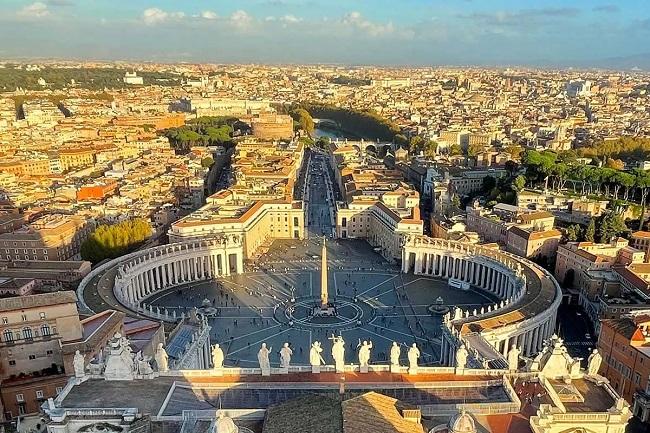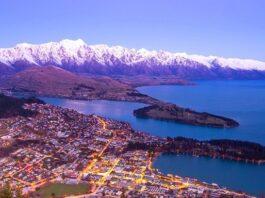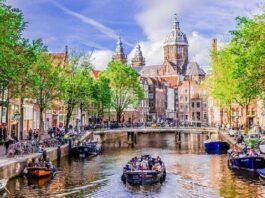This is the city where dreams are made of. This city takes great pride in its long and illustrious history, during which it conquered much of what is now Europe, Africa, and Asia. Christian history and artefacts abound throughout the city of Rome.
It’s easy for first-time visitors to become lost in the splendour of this city. After all, culture and heritage are literally around every corner. Because of this, tourists planning a trip to the Italian capital could benefit from doing some preliminary research to narrow down their list of must-see attractions.

Top 10 Places to Visit in Rome
The Colosseo neighbourhood in the city’s centre is where you’ll find the city’s oldest landmarks like the Roman Forum, Capitoline Hill, and the Colosseum. Old Rome, where the Pantheon and other famous Roman landmarks including Renaissance-era cathedrals and plazas can be found, is located on the city’s outskirts.
There simply isn’t enough time in a few days, a few weeks, or even a few months to explore all the main tourist attractions in Rome. A smart traveller won’t try to see everything in one trip. They throw a coin into the Trevi Fountain to make sure they’ll come back to Rome. Those who follow the instructions are said to be able to visit Rome again.
1. Baths of Caracalla
In the third century, Emperor Caracalla commissioned the construction of the Baths of Caracalla, the second biggest public baths in Rome, as an act of political propaganda.
For a 300-year period, the baths served the community. Visitors are still awed by the complex despite the damage caused by neglect, looting, and an earthquake.
2. National Roman Museum
Don’t miss the National Roman Museum, also known as the Museo Nazionale Romano, if you want to learn as much as possible about Rome’s rich history, legacy, and culture. This Roman museum does not keep all of its artefacts in one location. Instead, there are a number of exhibition sites spread out over the city.
In the beautiful Palace Massimo alle Terme, you can find amber, Roman antiques, and jewellery; in the Palazzo Altemps, you can enjoy the breathtaking use of marble and stunning sculptures; and in the restored historic site of the Baths of Diocletian, you can get an up-close look at Roman baths.
3. Victor Emmanuel II Monument
This ostentatious structure, dedicated to Italy’s first king after unification, Victor Emmanuel, gives the impression of being made entirely of white marble, although its interior is actually quite spacious. Giuseppe Sacconi began work on the structure in 1885, and it wasn’t finished until 1925.
There are two permanent museums here, one dedicated to the history of Italian Reunification and another to the stories of Italians who left the country. Even if you don’t think the Victor Emmanuel Monument is particularly attractive, the views from atop it are well worth the trip to Rome.
4. Piazza del Popolo
A huge oval area in northern Rome, the Piazza del Popolo dates back to the time of the Roman Empire. It used to be the beginning of the main northbound route.
The square is surrounded by three churches, but the main attraction is an antique Egyptian obelisk. The Porta del Popolo, which leads to the Via Flaminia and on to the Adriatic shore, dominates the northern side of the square.
5. Basilica of San Clemente
The Basilica of San Clemente, which dates back to the 12th century but sits on a church from the 4th century and an even older Roman temple, can be found at a short distance from the Coliseum. Fabulous frescoes and mosaics adorn the inside of the current church.
If you’re interested in learning more about Rome’s past, you can pay to visit the excavations on the first two floors.
6. Palatine Hill
The twins Romulus and Remus were supposedly found by a wolf on Palatine Hill, one of Rome’s Seven Hills, and raised by the animal until a shepherd came along and saved them.
Even if this myth is false, Rome was nevertheless established on Palatine Hill. Just remains remain from when the hill was topped with grand buildings during the Imperial period.
7. San Giovanni in Laterano
One of the four major basilicas in Rome is San Giovanni in Laterano, also known as St. John Lateran. It is the cathedral where the archbishop of Rome and the pope worship, and it is dedicated to both John the Baptist and John the Evangelist.
It’s widely acknowledged as Rome’s earliest surviving Catholic church. The outside isn’t as elaborate as some other churches, but the interior is stunningly decorated with mosaics, paintings, and column capitals.
8. Galleria Borghese
In the 17th century, Cardinal Sciopione Borghese constructed the gallery now known as the Galleria Borghese as a party palace. The cardinal was a patron of the arts and the nephew of Pope Paul V.
Several of the artworks, sculptures, and artefacts from his collection are currently on display at the gallery. The city is home to the National Museum of Musical Instruments as well as works by Titian and Bernini.
9. Saint Peter’s Square
St. Peter’s Square, in Vatican City, is the most well-known public space in all of Rome. There are hundreds of thousands of people here to hear the pope speak. Bernini designed the elliptical space in front of St. Peter’s Basilica in the 17th century.
The plaza is bordered on two sides by colonnades. On top of the colonnades are statues. An obelisk from Egypt that was brought to Rome by Emperor Augustus stands at the ellipse’s focal point.
10. Vatican Museums
Pope Julius II’s collection of sculptures from the 16th century is considered the museum’s genesis. They now fill multiple museums within Vatican City and are home to some of the most revered artefacts in the world.
The museum’s spiral staircase, the Raphael Rooms, and the ornate Sistine Chapel are just a few highlights. The ceiling of the chapel was painted by Michelangelo between 1508 and 1512.
Many people now consider Michelangelo’s ceiling and The Last Judgment to be his finest works of art. The museums feature 4 itineraries to help manage the large numbers of visitors, ranging in length from 1.5 hours to over 5 hours. Every trip culminates at the Sistine Chapel.



